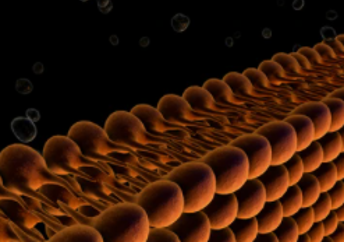Applications of Lipidomics in Virus Research
In order to achieve rapid and massive clonal replication, viruses must select different programs to meet heightened metabolic requirements. Among them, the rapid up-regulation of lipid biosynthetic pathways is a key component, playing a crucial role in the viral replication process. In recent years, the application of lipidomics has benefited greatly from the advances in mass spectrometry (MS) methodologies, enabling the identification of hundreds and thousands of lipids in biological matrices. Lipidomics studies have shown that viral infection can significantly change the lipid group of the host, thus elucidating the potential pathogenic mechanism.
Lipids

Lipids are fundamental cell components and have a crucial role in cellular functions, including being structural building blocks, material transporter, signaling molecules, and central energy stores. According to the type of head group and the connection between the head group and acyl chains, lipids can be divided into classes and subclasses. There are many kinds of lipid molecule species based on the diversities of lipid head group and acyl chains, such as glycerolipids (GLs), glycerophospholipids (GPs), fatty acyls (FAs), and sterol lipids (STs). In addition, lipids are characterized by a highly complex composition and structure as well as a wide range of concentrations. With the extensive study of lipid metabolic pathways and networks, lipidomics can provide information on changes in enzyme activity, gene expression patterns, and so on.
Lipids play a central role in viral infection
As the structural foundations of cellular and viral membranes, lipids play a central role in viral infection, including non-enveloped and enveloped viruses, as well as DNA and RNA viruses. For instance, viruses utilize the lipid synthesis and signaling of host cells to produce lipids for their envelopes. Lipid involvement in membrane fusion and transformation is important for viral replication. There are several major roles of lipids in viral infections, including,
- Serve as the direct receptors or entry co-factors for viruses at the cell surface or the endosomes
- Play crucial roles in the formation as well as the function of the viral replication complex
- Provide energy for viral replication
- Regulate the distribution of viral proteins in cells
- Impact on virus particle trafficking, assembly, and release
As entry cofactors, fusion cofactors, or direct and indirect viral receptors, lipids are involved in multiple steps in the virus life cycle ranging from viral entry to viral replication as well as viral endocytosis and exocytosis.
Applications of lipidomics in virus research
As a powerful analytical tool, lipidomics can describe a comprehensive map of all lipids (the lipidome) within a cell or organism. Lipidomics has become an exciting field with promising applications in molecular physiology and pathology, drug research and development, functional genomics, and so on. Liposome studies have demonstrated that virus infection significantly alters the host liposomes, thus elucidating the underlying pathogenesis. Creative Proteomics has been developing metabolomics detection methods and data analysis methods for many years. Based on professional scientists and advanced platforms, we can accelerate our customers' projects to the next level. Here we focus on lipidomics in viral infections, involving Zika virus (ZIKV), hepatitis C virus (HCV), severe acute respiratory syndrome coronavirus type 2 (SARS-CoV-2), Ebola virus (EBOV), and enteroviruses.
For more information on how we can help you, please feel free to contact us.
Reference
- Kyle, J. E. (2021). "How lipidomics can transform our understanding of virus infections." Expert Review of Proteomics, (just-accepted).
Related services
* For research use only.

